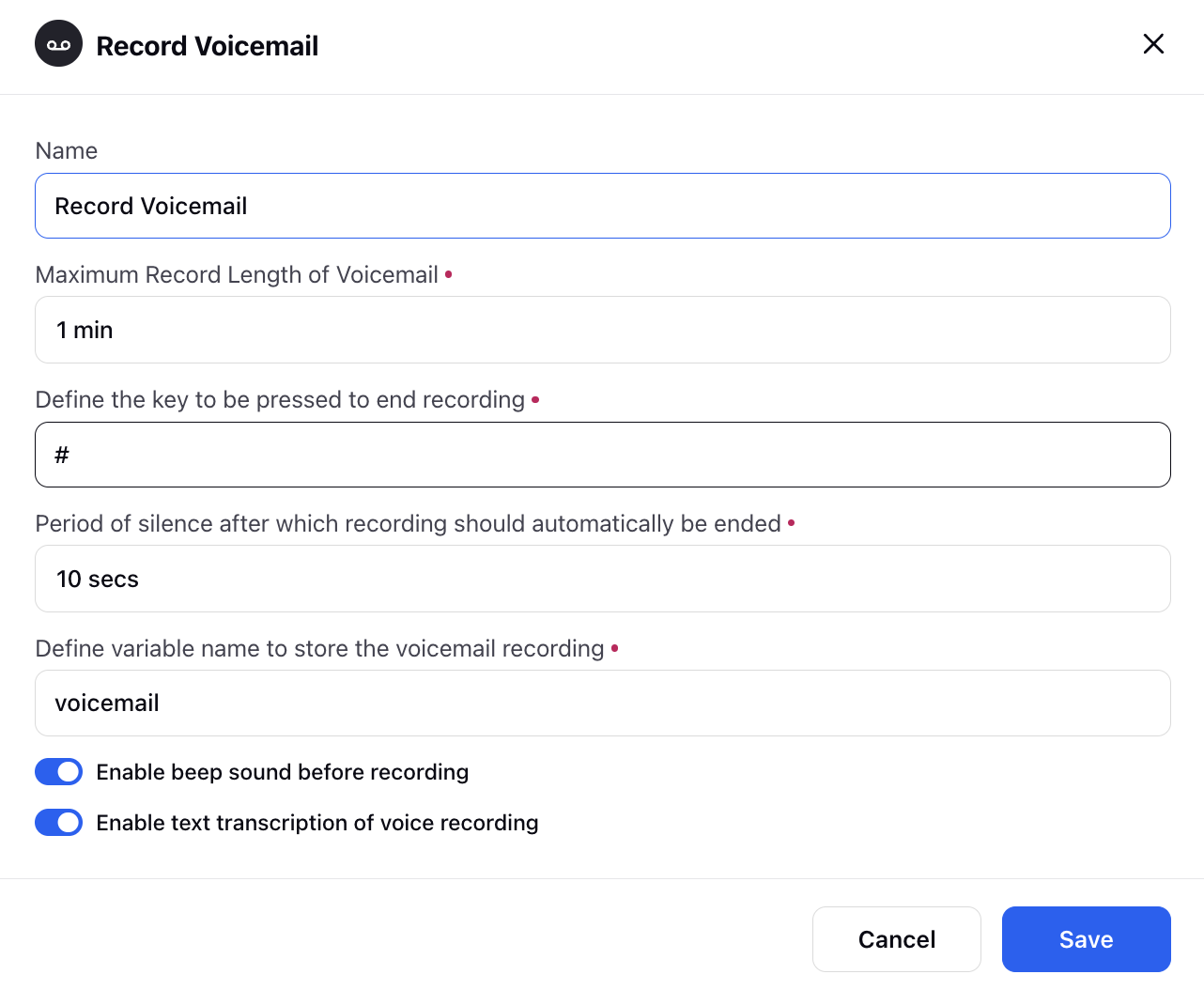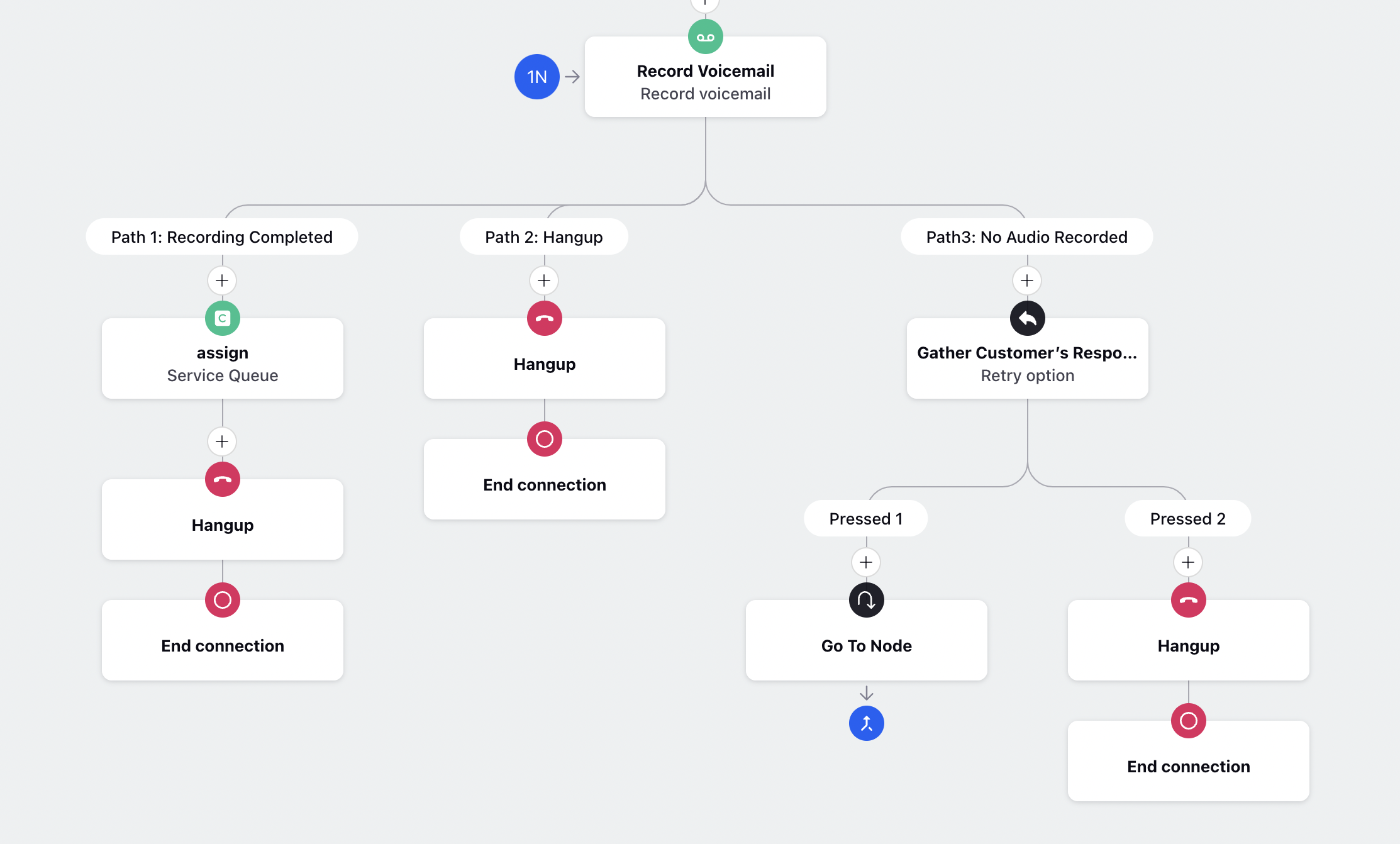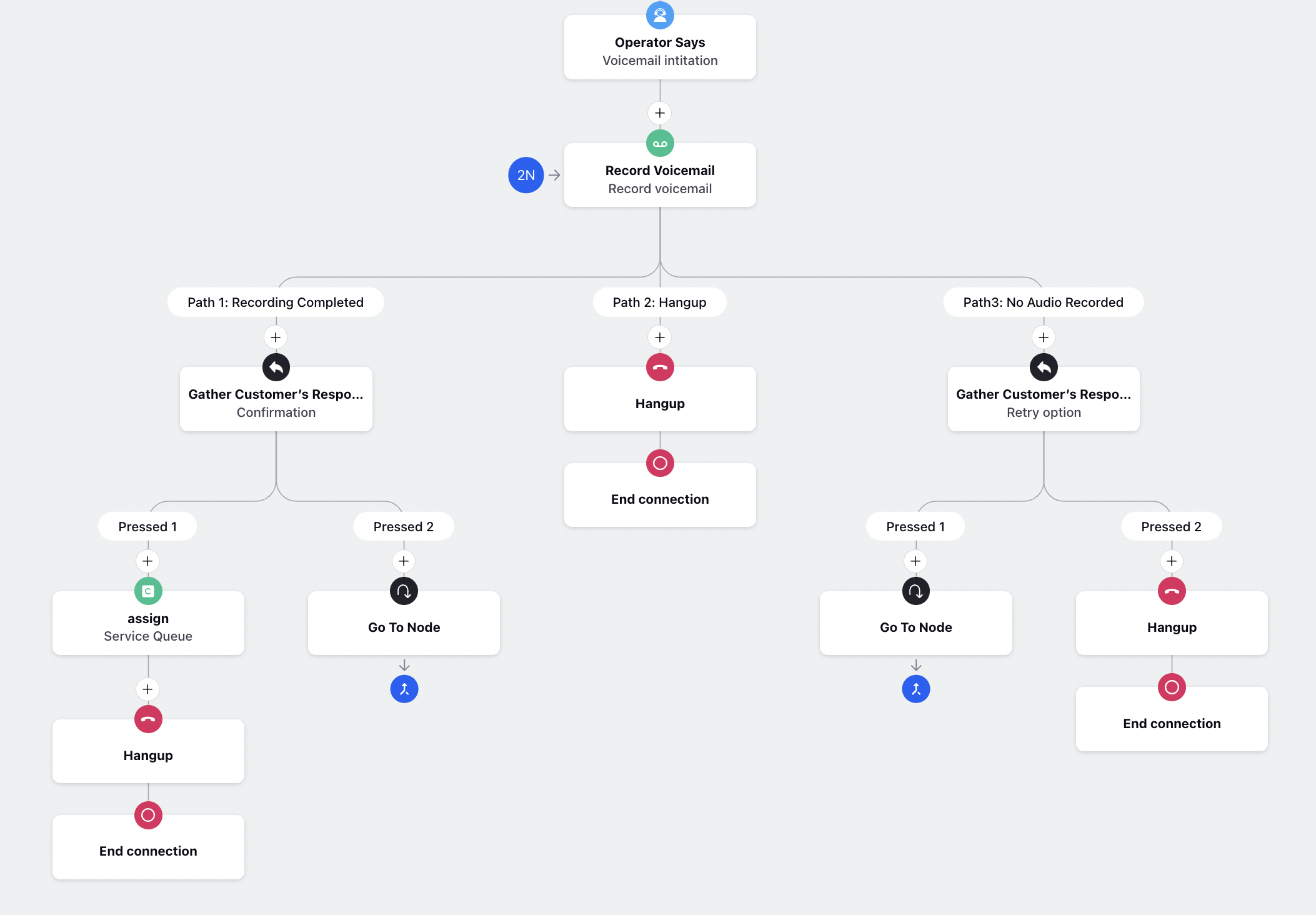How to Send Customer to Voicemail
Updated
Pre-requisite for configuring this node in IVR: Sprinklr Voice should be enabled for the environment and your user should have IVR View, Edit or Create permission

Voicemail is commonly used to provide customers with a way to leave detailed messages when agents are unavailable, ensuring their inquiries or concerns are captured and addressed promptly. The Record Voicemail node in Sprinklr IVR allows customers to leave detailed voice messages when agents are busy or outside of business hours. This feature provides a convenient way for customers to communicate their concerns, enabling agents to listen to the voicemail later and take appropriate action, enhancing the overall customer experience.
Here are the screenshots of the sample configuration of this node-


Components
Major components for record voicemail node are-
Maximum record length: This field allows you to set the maximum duration for customer voicemail recordings. Once the specified time limit is reached, the system will execute the designated action specified in the "Recording completed path"
End recording keypress: This field lets you choose a specific key that, when pressed, will stop the voicemail recording and trigger the action specified in the "Recording Completed Path"
Maximum period of silence: This field allows you to specify a duration of silence during the voicemail recording. If no audio is detected within this time, the recording will automatically stop. If something was recorded, the "Recording Completed Path" will be executed, and if there was complete silence, the "No Audio Recorded Path" will be followed.
Process Variable: In this field, you provide name of the variable that will store the voicemail recording URL recorded by the user. This variable can then be utilized later in the IVR for voicing out to customer and take confirmation, sending voicemail to any external system.
Note: Variable name must not start with any special characters(~,`,!,@,#.....) and numbers. Also there must not be any space in between the variable name.
Note: This variable can be voiced out to customer using Audio variable functionality of operator says.
Beep sound toggle: This option, when enabled, plays a beep sound to notify the customer that the recording has started. This helps the customer know when they can begin recording their message after hearing the beep sound.
Text transcription toggle: This option, when enabled, will transcribe the voicemail recording for the agent & this transcription will be visible to the agent in the console along with the audio. This allows the agent to quickly review the text transcript of the voicemail, saving time and providing a convenient way to understand the customer's message.
Paths of record voicemail node: There will be three paths which will emerge form this node, you can configure your different business logic on these three paths-
Recording complete: This path is executed when audio is recorded. Custom business logic can be applied here, such as confirming the voicemail with the customer, assigning the case to an work queue using the Assign Case node if accepted, or providing an option to retry if rejected. Alternatively, the case can be directly assigned to the agent.
Hangup: This path is executed when the customer hangs up the call before completing the voicemail recording.
No audio Recorded: This path is executed when no audio is recorded due to silence. Custom business logic can be applied here, such as giving option for retry the voicemail.
